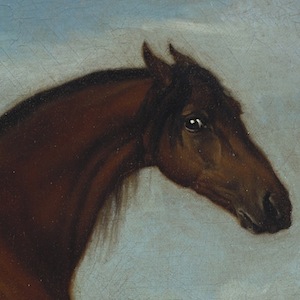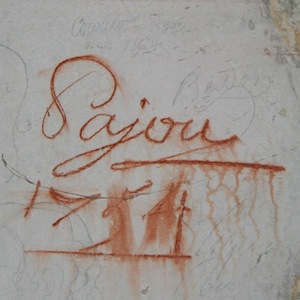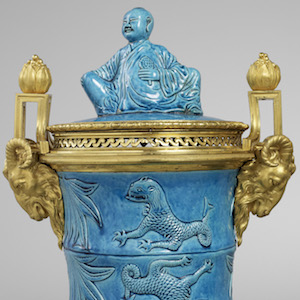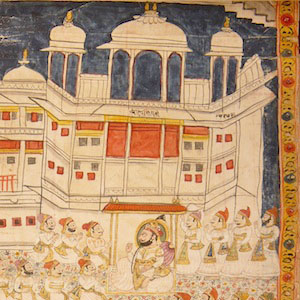David Pullins
A horse stands in profile against a bucolic landscape populated by two pastoral figures, a flock of sheep and a dog (Fig. 1). Visual analysis confirms the content of an eighteenth-century label once affixed to the painting’s stretcher: “The horse was recently painted by [George] Stubbs in London, the background of the picture by [Claude-Joseph] Vernet, the celebrated marine painter, and the two figures, the dog and the sheep, by [François] Boucher, Principal Painter to the King of France.”[1] The tightly knit strokes of the horse contrast with the looser blending of tones in the landscape and sky that come just short of meeting the animal’s outline, resulting in a halo that heightens the sense of this central element as a kind of cut-out affixed somewhat unconvincingly to the canvas. The most rapidly applied brushstrokes have been used to represent the human figures, sheep and dog, all cleverly folded into the landscape at a break between foreground and background, a line that is sutured further through lightly applied lichen-green paint along the crest of the hill and blades of grass that sprout between the horse’s legs.




